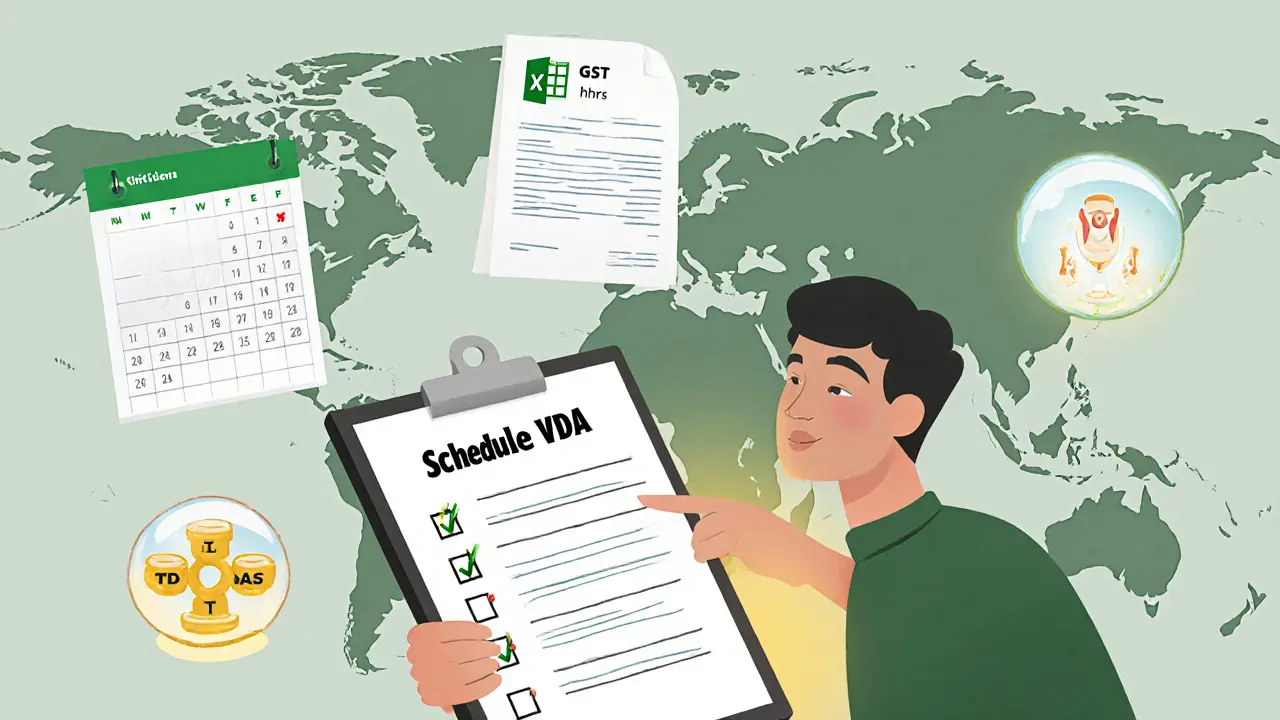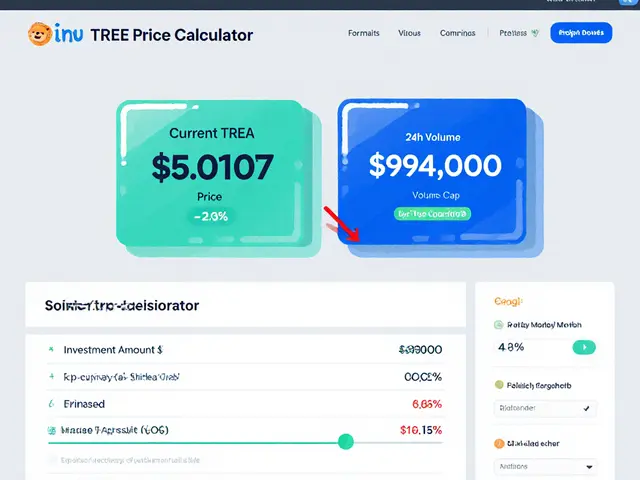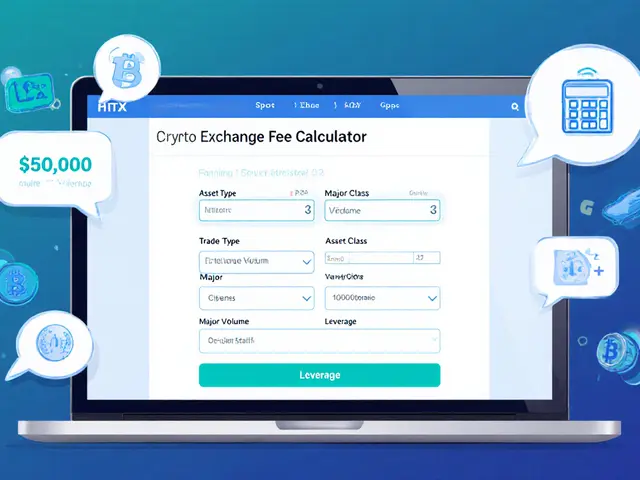- Home
- ::
- India’s 30% Crypto Tax Explained: A Bitcoin Trader’s Guide

India’s 30% Crypto Tax Explained: A Bitcoin Trader’s Guide
India Crypto Tax Calculator
Your Tax Calculation
Enter your values above and click "Calculate Tax Liability" to see your tax breakdown.
- Flat 30% tax on gains
- Additional 1% TDS if annual threshold crossed
- 18% GST on exchange fees
- No loss offsetting allowed
Bitcoin traders in India are constantly juggling price charts, exchange fees, and a tax regime that feels more like a maze than a roadmap. Since April2022 the government has imposed a flat India crypto tax of 30% on every gain from virtual digital assets, and the rules have only gotten more layered with TDS and GST. If you’ve ever wondered how much you really owe, which expenses you can deduct, or whether you can offset a loss on one coin against a profit on another, this guide breaks it all down in plain language.
What the 30% Rate Actually Means
India cryptocurrency tax is a flat income‑tax rate of 30% applied to gains from Virtual Digital Assets (VDAs) under Section 115BBH of the Income Tax Act. The rate sits on top of the standard 4% health and education cess, pushing the effective burden to roughly 31.2% for most individual taxpayers.
The rule makes no distinction between short‑term and long‑term holdings. Whether you bought a Bitcoin fraction a week ago or held it for three years, the taxable gain is calculated the same way: selling price minus purchase price, multiplied by 30%.
How to Calculate Your Bitcoin Tax Liability
The calculation is deliberately simple, but simplicity can be deceptive when you have dozens of trades across multiple exchanges. Use the formula below for each sale:
- Identify the selling price in INR (or converted at the transaction date’s exchange rate).
- Identify the purchase price - only the original cost of acquisition is allowed. Transaction fees, storage fees, and other expenses are NOT deductible.
- Compute the gain: Selling Price - Purchase Price.
- Apply the tax rate: Gain × 30% = tax owed for that trade.
Example: You bought 0.5BTC for ₹2,00,000 and sold it a month later for ₹3,00,000. Tax = (₹3,00,000 - ₹2,00,000) × 30% = ₹30,000.
Why Losses Won’t Help You Reduce Tax
One of the harshest aspects of the regime is the prohibition on loss offsetting. If you lose ₹30,000 on Bitcoin but make a ₹30,000 profit on Ethereum, you still owe tax on the Ethereum gain (₹30,000 × 30% = ₹9,000). The loss cannot be carried forward to another financial year either.
In practice this means active traders who swing between winners and losers often end up paying tax on a net‑zero or even net‑negative portfolio. The rule applies to every VDA, so you cannot pool losses from one coin against gains on another.
Additional Layers: 1% TDS and 18% GST
Since July2022 the Income Tax Department introduced a 1% Tax Deducted at Source (TDS) under Section 194S for any crypto transfer that exceeds ₹50,000 in a financial year. The TDS is collected by the exchange and deposited with the government; it is later adjusted against your final tax liability.
From July2025 an 18% Goods and Services Tax (GST) was added on crypto‑exchange services. This GST is levied on the fee charged by the platform, not on the trade itself, but it effectively raises the cost of every transaction.
Putting it together, a typical trade on a domestic exchange may face:
- 30% income‑tax on gains,
- 1% TDS on the transaction value (if the annual threshold is crossed), and
- 18% GST on the exchange fee.
Record‑Keeping You Can’t Skip
Compliance hinges on meticulous documentation. The Income Tax Department requires you to file a Schedule VDA in your ITR for every financial year from FY2022‑23 onward. Here’s a practical checklist:
- Spreadsheet with columns: Date, Asset (e.g., Bitcoin), Buy‑price (INR), Sell‑price (INR), Exchange, Transaction ID.
- Separate rows for each purchase and each sale - even partial sales.
- Conversion rates used (if you traded in USD/USDT). Keep the exchange rate screenshots.
- Proof of TDS deduction (Form 26AS) and GST invoices from the platform.
For a simple buy‑and‑hold investor, the annual time investment is about 10‑15hours. Active traders often spend 40‑50hours, especially when juggling multiple wallets and foreign exchanges.
Comparing India’s Crypto Tax with Other Jurisdictions
Few countries impose a flat 30% rate without any loss‑offsetting. The table below highlights the key differences.
| Country | Tax Rate on Gains | Loss Offset Allowed? | Additional Levies (TDS/GST) |
|---|---|---|---|
| India | 30% (plus 4% cess) | No - losses cannot be set off or carried forward | 1% TDS, 18% GST on exchange fees |
| United States | 0‑20% (depending on holding period & income) | Yes - capital losses offset gains | None |
| United Kingdom | 10% or 20% (CGT rates) | Yes - losses offset gains | None |
| Germany | 0% after 1‑year holding | Yes - after 1year, gains are tax‑free | None |
| Singapore | No capital‑gains tax | Not applicable | None |
The contrast makes it clear why many Indian traders have migrated to offshore platforms - they avoid the 30% bite and the loss‑offset barrier.

Practical Tips for Bitcoin Traders Under the Indian Regime
- Consolidate trades on fewer exchanges. Fewer platforms mean fewer CSV exports and less chance of mismatched data.
- Use dedicated crypto‑tax software. Tools like Koinly and ClearTax now offer India‑specific VDA modules that auto‑calculate the 30% liability and generate Schedule VDA entries.
- Consider a hold‑long‑term strategy. Since losses can’t offset gains, reducing turnover minimizes taxable events.
- Plan for TDS. If you expect to cross the ₹50,000 threshold, set aside 1% of each sale in a separate account to avoid cash‑flow surprises when the TDS is deducted.
- Track GST on fees. Keep the invoice from the exchange; you can claim input‑tax credit only if you’re a GST‑registered business, which most retail traders are not.
- Seek professional advice for large portfolios. A chartered accountant familiar with the VDA schedule can spot errors early and prevent notices from the Income Tax Department.
What the Future Might Hold
Industry analysts expect the government to revisit the loss‑offset rule and possibly raise the TDS threshold, especially as crypto trading volumes stabilize. The Reserve Bank of India is also working on a broader digital‑asset regulatory framework that could integrate VDA reporting directly into the tax filing portal. Until official changes arrive, the safest bet is to treat every Bitcoin sale as a taxable event and keep airtight records.
Frequently Asked Questions
Do I have to pay tax on Bitcoin received as a gift?
Yes. Under Section 2(47A), any transfer of a VDA, including a gifted Bitcoin, is taxable based on its fair market value at the time of receipt. The recipient must report it in Schedule VDA and pay 30% on any later gain.
Can I offset my Bitcoin losses against my salary income?
No. Losses from VDAs cannot be set off against any other income, including salary or business profit. They are simply ignored for tax purposes.
How do I claim the 1% TDS you mentioned?
The exchange deducts the 1% at source and deposits it with the tax department. When you file your ITR, the amount appears in Form 26AS. It is automatically adjusted against your final 30% tax liability.
Is GST payable on every Bitcoin trade?
GST is levied on the service fee charged by the exchange, not on the trade value itself. If your platform charges a 0.2% fee, that fee is subject to 18% GST.
Do I need to file Schedule VDA if I only bought Bitcoin and never sold?
No. Schedule VDA is required only for transactions that result in a gain or loss. Holding Bitcoin without any disposals does not trigger a filing requirement.


 Finance
Finance





Write a comment